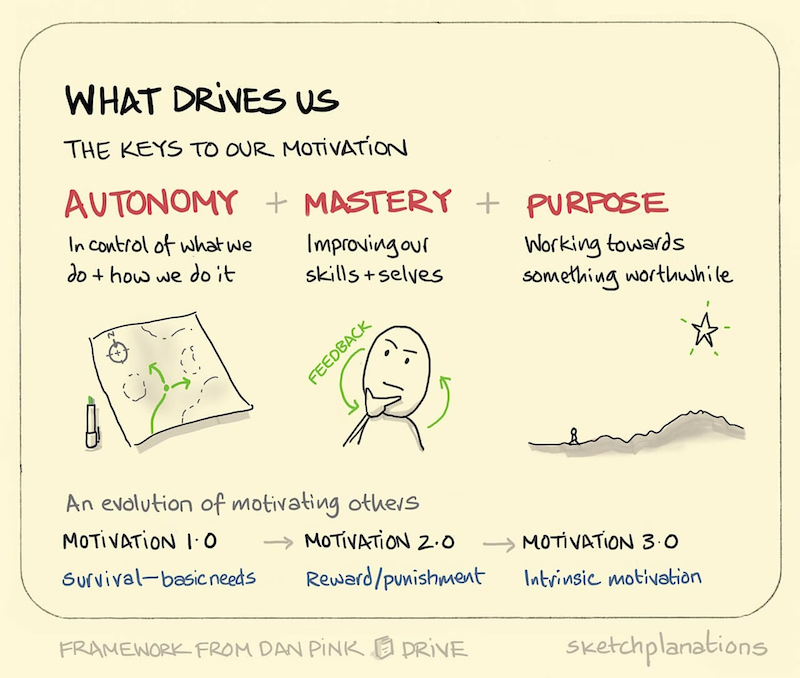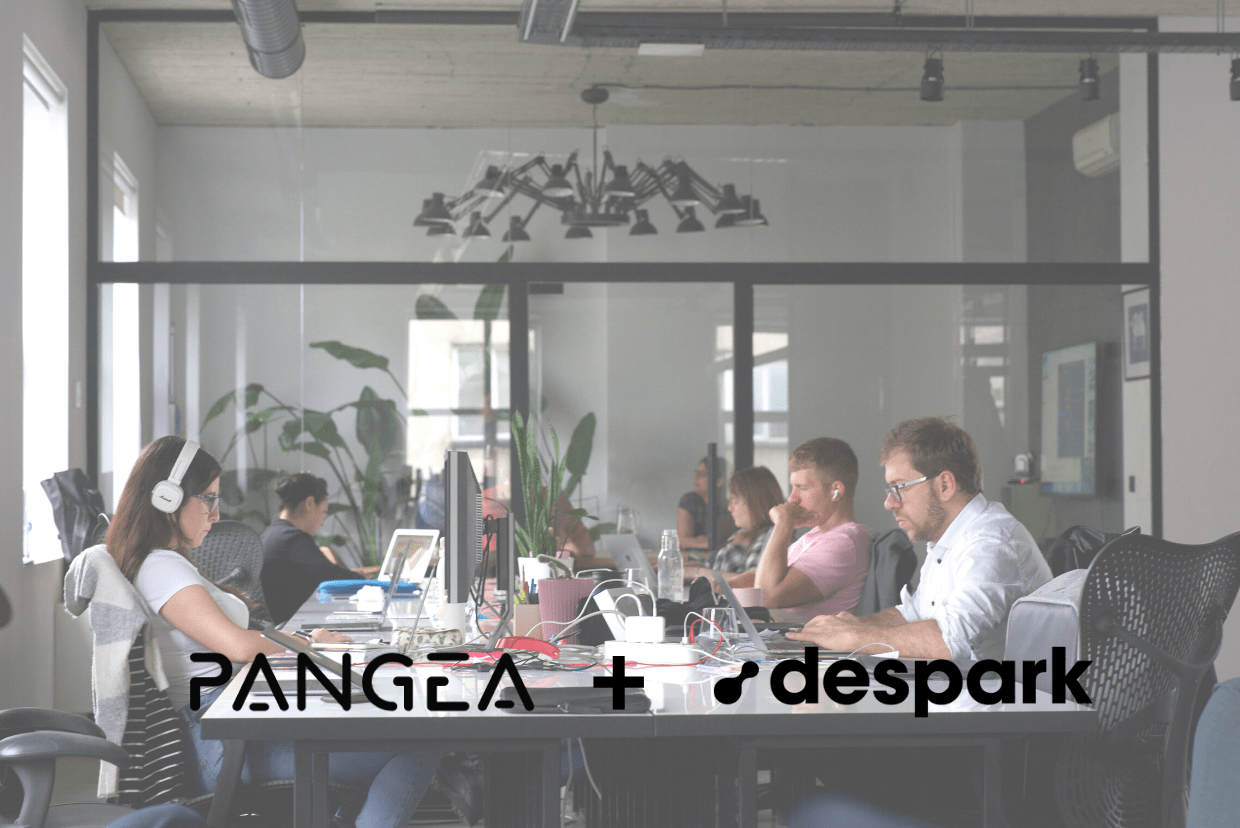.png)
Rady Chamova, our lovely People & Culture Officer shares her take on finding the right type of motivation for software development teams, taking inspiration from the book "Drive" by best-selling author Daniel Pink.
The Great Resignation
Since 2021, a record-number of people were ready to voluntarily leave their jobs. The number of employees who are considering quitting their jobs right now is around 40%, a number that hasn’t changed much in recent months. The Great Resignation, as its now known, came around because people felt underpaid, had few opportunities to grow from their role, or generally felt unmotivated to continue doing what they did until now.
I was also part of that group. Every day seemed to merge to the next and I had no sense of fulfilment or enthusiasm. I struggled to find motivation and a sense of purpose to go on.
The business world is lagging behind

“Drive”, Daniel Pink. Image credit: Goodreads
Daniel Pink, а New York Time’s best-selling author of the book “Drive”, believes the business world is still relying on old patterns of extrinsic motivation - bidding against higher wages, more and better benefits, bonuses and so on. I hear this question among my colleagues more and more:
What happened with those people’s motivation, didn’t we give them all?
Apparently no. There is a threshold that ensures peace of mind - salary, standard bonus, benefits, so that everyone feels fairly rewarded, to have any motivation at all.
But it is scientifically proven that higher pay and bonuses resulted in better performance ONLY if the task consisted of basic, mechanical skills. It worked for problems with a defined set of steps and a single answer. If the task involved cognitive skills, decision-making, creativity, or higher-order thinking, higher pay resulted in lower performance. This discrepancy comes from the difference between extrinsic and intrinsic motivation.
The clash between extrinsic and intrinsic motivation
Extrinsic motivation refers to behavior that is driven by external rewards. These rewards can be tangible, such as money or grades, or intangible, such as praise or fame. Extrinsic motivation is mostly used in routine work, where there is a simple set of rules and a clear destination to go to. Routine work relies on clearly defined processes that don’t change, in order to achieve optimal results.
Intrinsic motivation, on the other hand, occurs when we act without any obvious external rewards. We simply enjoy an activity or see it as an opportunity to explore, learn, and actualize our potentials.
In the context of software development and digital product development, we hardly do any routine work. Instead, people are expected to conceptualise, analyse, find new solutions to existing problems, and most importantly - create something that didn’t exist before.
The building blocks to fostering intrinsic motivation
The secret to high performance isn't rewards and punishments, but that unseen intrinsic drive-- the drive to do things for their own sake. The drive to do things because they matter. Daniel Pink suggests that the new operating system for businesses revolves around three elements: purpose, mastery and autonomy.

Elements of motivation. Image credit: Sketch Planations
Purpose.
The desire to do work in the service of something larger than ourselves.
Companies like Wikipedia, Firefox, Apache and Linux were developed for free by their creators and have open-source code. What is the main motivation of the creators? It is the internal motivation to apply their knowledge and skills in contributing to the small or large community we all belong to.
Autonomy.
The urge to direct our own lives.
To be fully motivated, you must be able to control what you do, when you do it, and who you do it with. Autonomy motivates us to think creatively without needing to conform to strict workplace rules.
In the old-school model, companies set up performance goals for their employees that are not aligned with their internal motivations. Being self-directed means people are free to pursue goals that they have set up for themselves.
Mastery.
The desire to get better and better at something that matters.
Pink argues that humans love to "get better at stuff" - they enjoy the satisfaction from personal achievement and progress. In Maslow’s pyramid, self-actualisation needs occupy the highest spot. Self-actualisation describes the fulfilment of your full potential as a person.
When people are driven by purpose, have the autonomy to explore new solutions and approaches, they are inherently more likely to seek mastery and self-actualisation.
The takeaway
I found out for myself that the issue wasn’t because I didn’t like my job, or because I was too lazy to work anymore. I just didn’t have a purpose to guide me and a space to develop higher mastery. Once I found a bigger purpose of my work that spans beyond extrinsic motivators, the motivation came back.
The great resignation showed us that there is something wrong in the traditional model of extrinsic motivators “if you do this, you get that”. It showed us that this model is no longer applicable for modern technology-driven companies that aim to innovate. And now it’s our turn as employees, employers, and coworkers to act on it.
If you truly believe this new model is working, live with it. Spread it among your community, implement it in your daily life and do what it takes to bring change in your organisation.
## This article was first published as part of Despark Voices - Despark’s own Linkedin newsletter






